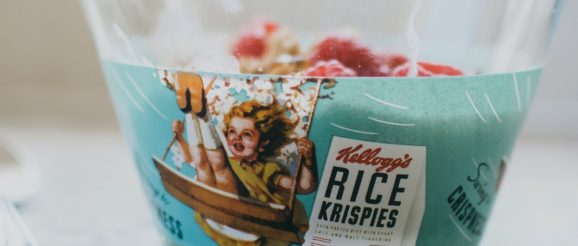Recession, Innovation and Survival – A Lesson from Kellogg’s | Innovation Management

In times of severe recession should you cut costs and focus on survival or take the opportunity to invest in innovation so that you can benefit from the eventual recovery?
Well the short answer is that you have to survive first. If the cash dries up and you cannot pay the rent then a pipeline of great innovative products and services is of little help. So it is natural that companies hunker down, cut costs and focus on getting through the recession with the business still intact.
However, we know that recessions are times of opportunity. Many successful start-ups began during recessions. Habits change. Consumers adopt new practices. This all means opportunity for the nimble. During the recession that started in the Finance sector in 2008, Salesforce.com boomed by using a new business model, software as a service.
A famous example occurred in the 1920s. Two companies dominated the breakfast cereal market, Kellogg’s and Post. When the great depression occurred the Post Corporation cut costs and focussed on mergers and acquisitions. Kellogg’s invested heavily in a risky new product – Rice Krispies. Patented in 1927 and launched in 1928, they were made of rice, sugar and salt. When drenched in milk the cereal makes a sound which became the basis of the ‘snap, crackle and pop’ marketing slogan. Rice Krispies were inexpensive, novel and popular with children. Kellogg’s profits surged and they overtook Post to become the undisputed market leader.
From a history of innovation perspective, it is worth noting that the product on which Kellogg’s success was built, Corn Flakes, was the result of an accident. In 1894, John Harvey Kellogg, the superintendent of the Battle Creek Sanatorium in Michigan was a strict Seventh Day Adventist. The diet he gave his patients was bland, vegetarian and excluded alcohol, tobacco or caffeine. He believed that spicy or sweet foods would increase unhealthy passions. John and his younger brother, Will Keith Kellogg, left a batch of cooked wheat while they were busy with other matters. On returning, they discovered that the wheat had gone stale. Rather than throw it away they processed it through rollers. They expected to get a long thin sheet of dough but were surprised to find flakes. These they toasted and served to patients at the sanatorium, who pronounced them tasty. Will wanted to make the flakes out of corn and to add sugar to make them more delicious. John disagreed and the brothers fell out. A legal battle over the name ensued. Will eventually won and built the Kellogg’s company into a massive success.
Incidentally, Charles Post was a patient at the sanatorium in 1894. He was inspired by the diet there to set up his own company. He copied many of the Kellogg brothers’ ideas and built his own breakfast cereal company which became a great rival.
About the author
 Paul Sloane is the author of The Leader’s Guide to Lateral Thinking Skills and The Innovative Leader. He writes, talks and runs workshops on lateral thinking, creativity and the leadership of innovation. Find more information at destination-innovation.com.
Paul Sloane is the author of The Leader’s Guide to Lateral Thinking Skills and The Innovative Leader. He writes, talks and runs workshops on lateral thinking, creativity and the leadership of innovation. Find more information at destination-innovation.com.
